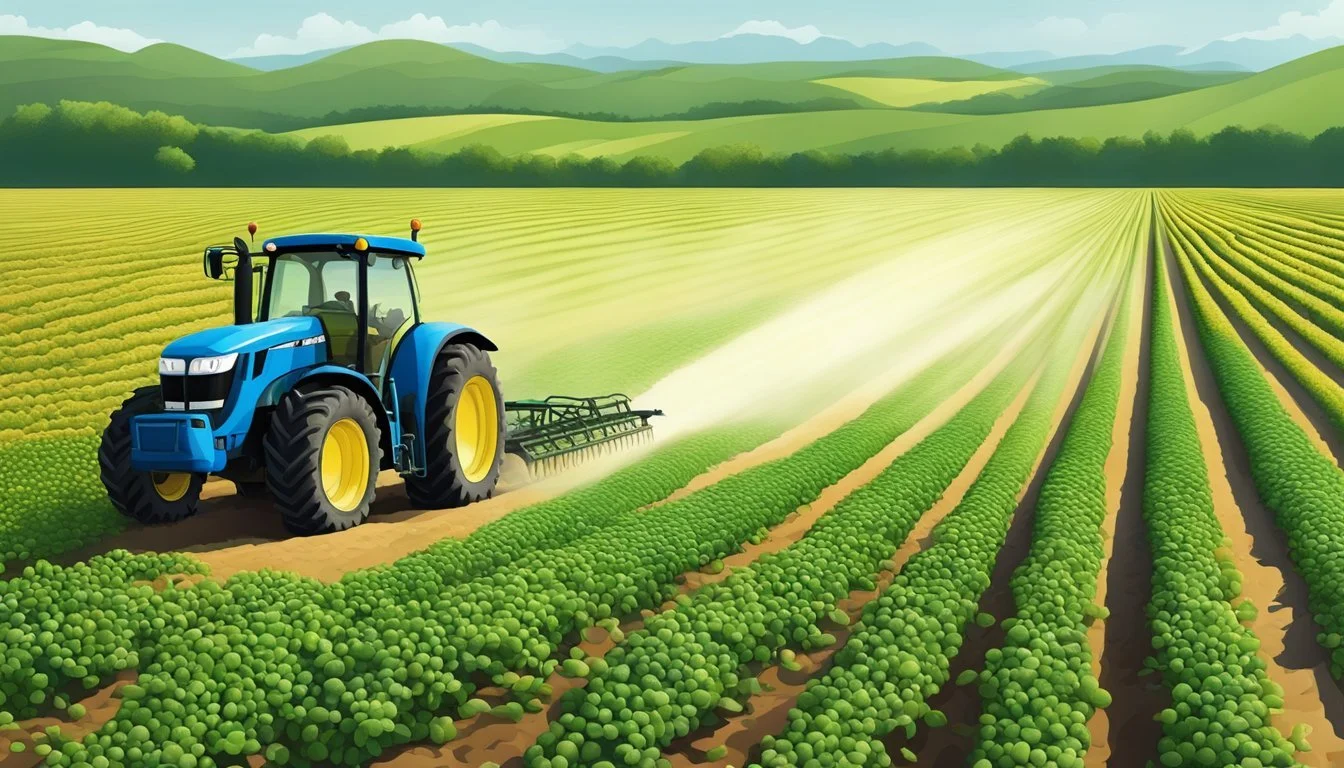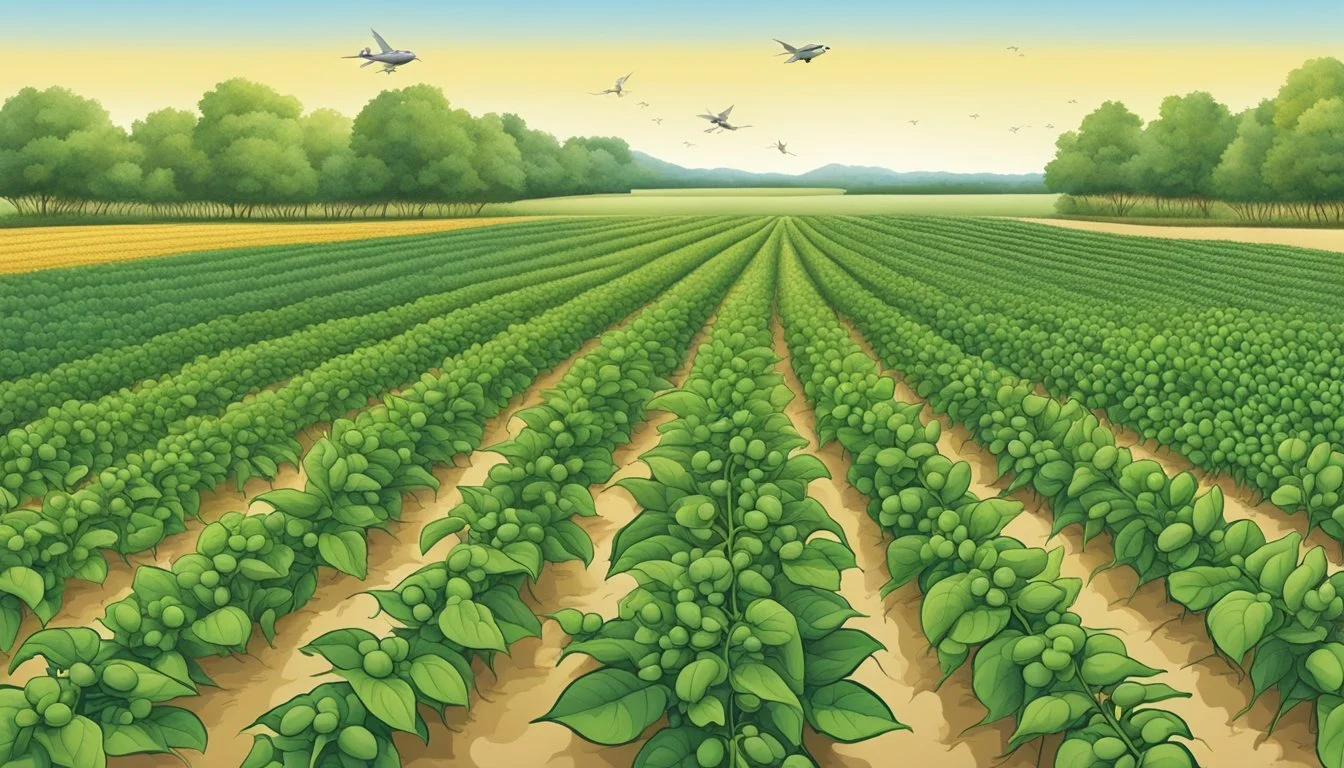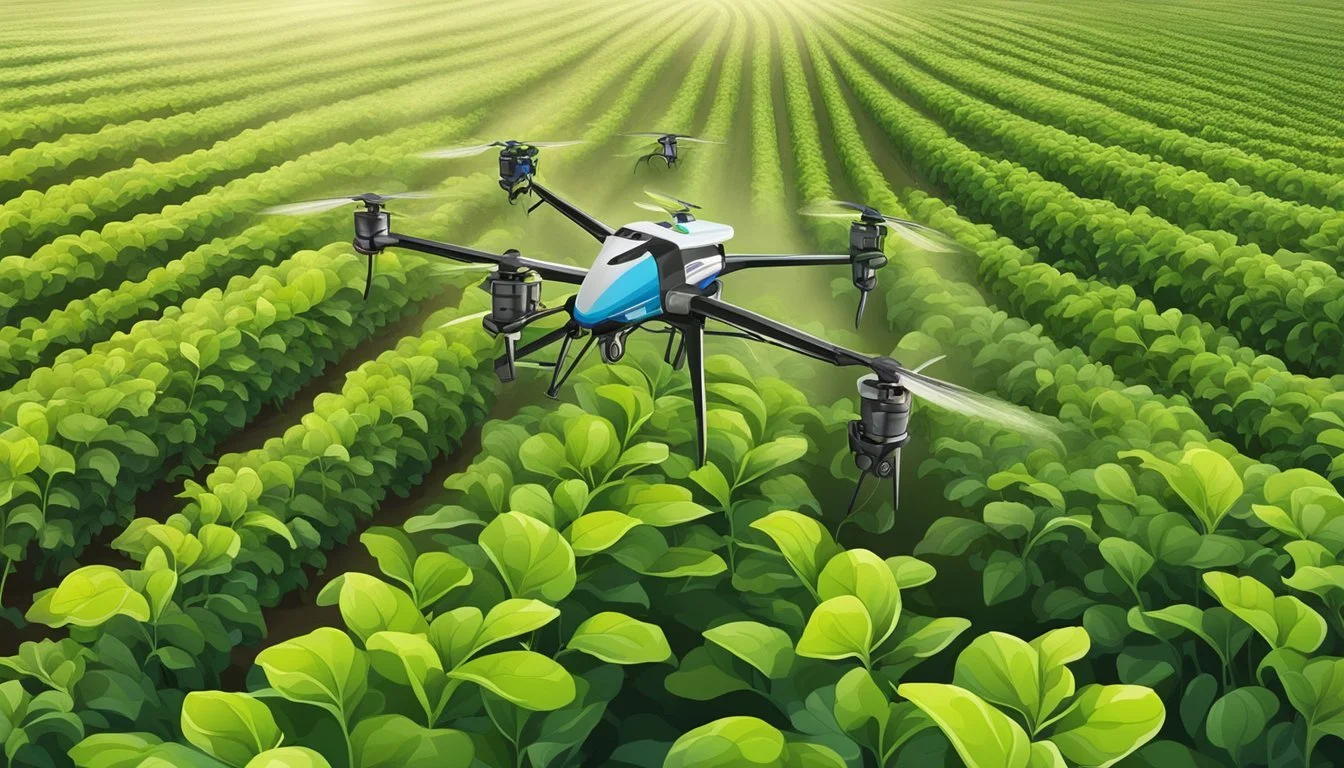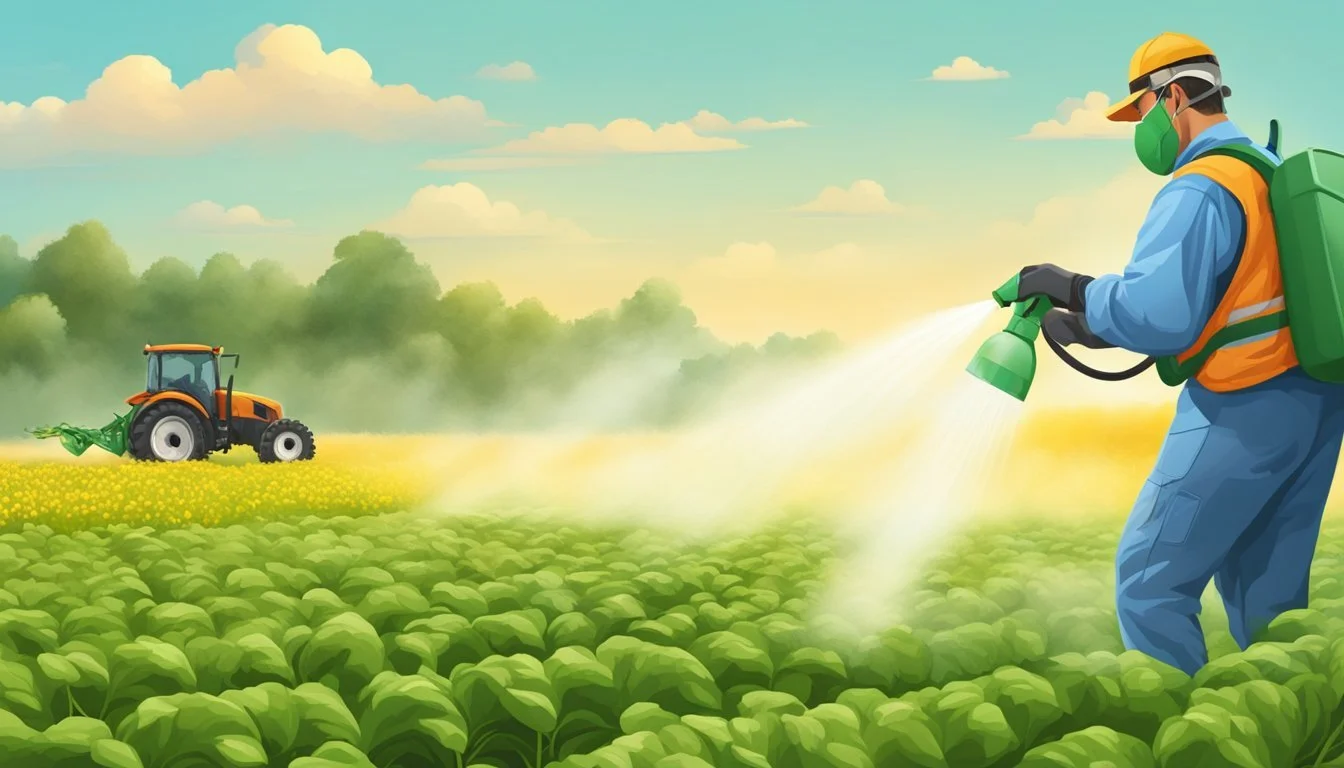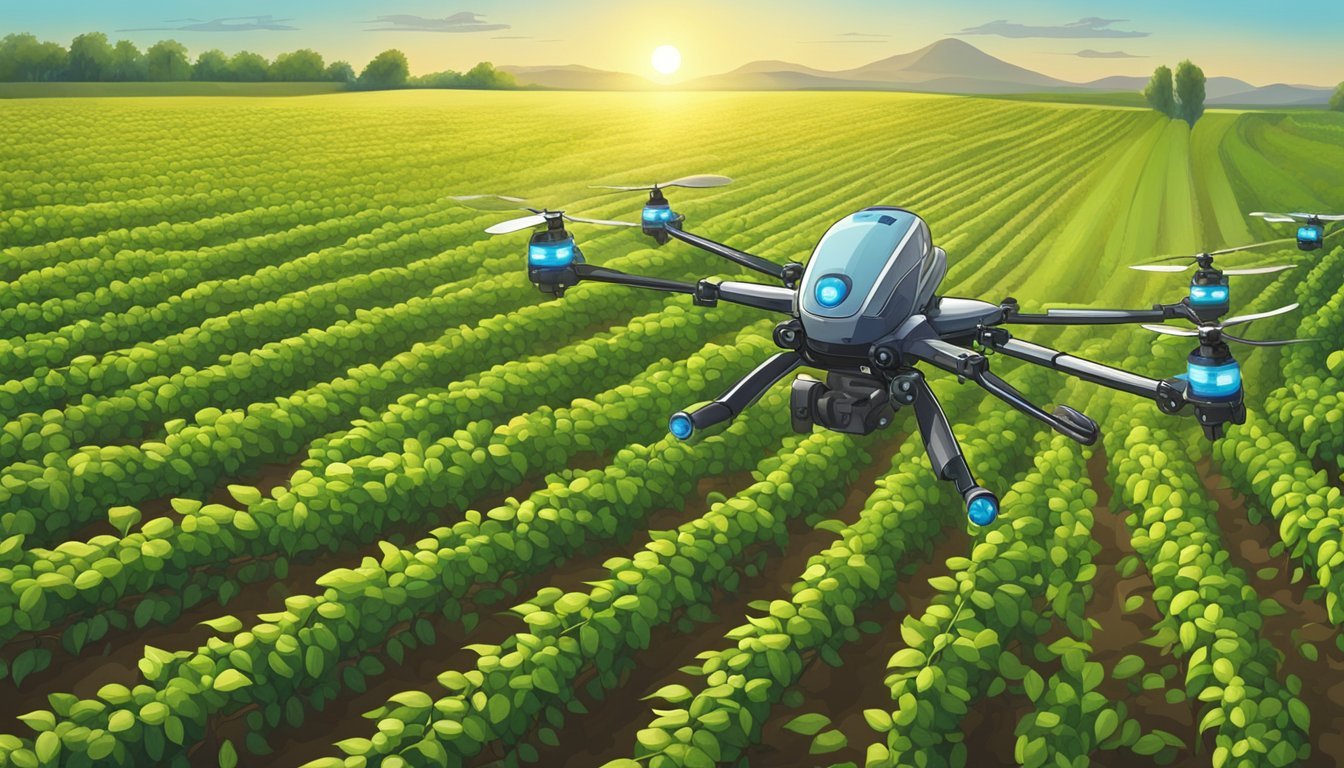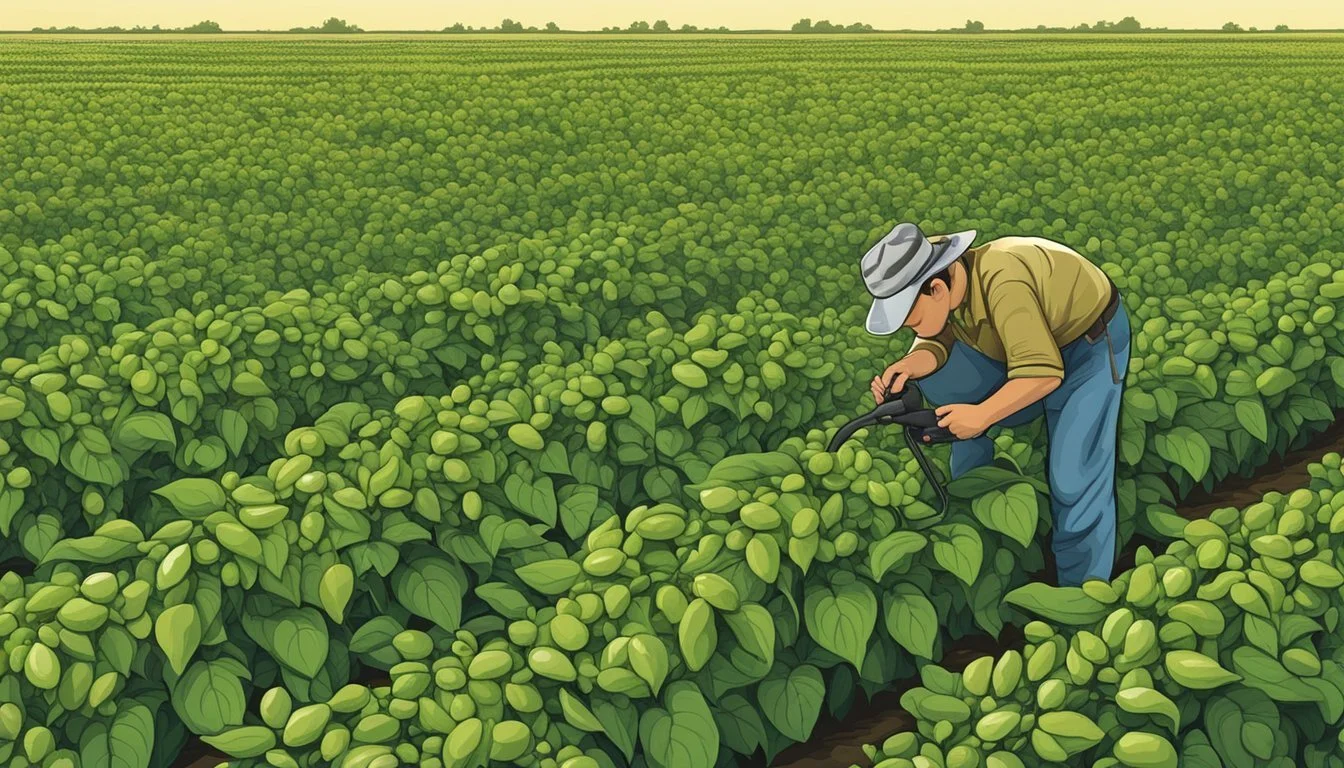Pest Control for Soybeans
Effective Strategies for Healthy Crops
Pest control in soybean cultivation is a critical aspect of agricultural management that ensures the health and productivity of the crop. Soybeans are an important commodity, used in various products from animal feed to consumer foods. However, they are susceptible to a range of insect and mite pests that can significantly reduce yields. Effective management of these pests is essential for farmers to protect their investment and supply the growing demand for soybeans.
Integrated Pest Management (IPM) strategies are widely recommended to tackle pest issues in soybean fields. These strategies include a combination of cultural, biological, and chemical control methods to manage pests efficiently and environmentally sustainably. The goal of IPM is to keep pest populations at levels that do not cause economic harm. By using IPM, farmers can minimize the use of chemical insecticides, reducing the risk of environmental damage and the development of pesticide resistance in pests.
Regular monitoring of soybean crops for pest activity is a critical step in any pest control plan. This enables the timely identification of pest species and the implementation of appropriate control measures before pest populations reach damaging levels. By understanding pest life cycles and behavior, farmers can choose the most effective control options and apply them at optimal times. With a proactive approach to pest management, soybean growers can maintain healthy crops and maximize yields.
Biology of Soybean Pests
Understanding the biology of various insect pests is critical for effective soybean pest management. This encompasses an awareness of the common insects that affect soybean crops, including their life cycles and the specific ways they impact soybean growth.
Common Insects and Their Lifecycle
Bean Leaf Beetle: Adults emerge in late spring and lay eggs at the base of soybean plants. The larvae feed on the roots, while adults can defoliate plants and damage pods.
Caterpillars: This group includes the Velvetbean Caterpillar and Green Cloverworm, both undergoing complete metamorphosis from eggs to destructive larvae, then to pupae, and finally to adults.
Stink Bugs: Both the Brown Stink Bug and Green Stink Bug undergo incomplete metamorphosis. They insert their mouthparts into soybean pods, leading to seed damage during pod fill.
Soybean Aphid: They reproduce rapidly, with females giving birth to live young. Colonies can explode in number, leading to significant plant stress.
Japanese Beetle: Complete metamorphosis with larvae (grubs) feeding on roots and adults consuming leaves and flowers.
Grasshoppers: They lay egg pods in soil, and nymphs resemble adults but without wings. They can defoliate plants if in large numbers.
Potato Leafhopper: Moves north with spring weather patterns. Nymphs and adults feed on plant sap, causing "hopperburn."
Corn Earworm: As a migratory pest, it lays eggs on foliage and larvae feed on various parts of the plant, including the pods.
Blister Beetle: Adults emerge in early summer and feed on soybean leaves, while the larvae are parasites of grasshopper eggs.
Twospotted Spider Mite: Thrives in hot, dry conditions, causing leaf stippling due to feeding.
Impact on Soybean Growth
Pod Fill Stage: During this critical phase, insect pests such as Stink Bugs and Japanese Beetles can cause direct damage to seeds which compromises yield and quality.
Defoliation: Pests like Bean Leaf Beetle, Grasshoppers, and Blister Beetle can strip foliage, reducing the plant's ability to photosynthesize.
Sap Feeding: Soybean Aphids and Potato Leafhoppers extract vital plant fluids, which can stunt growth and lead to yield loss.
Plant Stress: Heavy infestations of pests, particularly Twospotted Spider Mites, can significantly stress plants, sometimes leading to plant death if not managed effectively.
Pest Management Strategies
Effective pest management in soybeans is critical to maximizing yields. It requires implementing diverse strategies that balance chemical, biological, and cultural tactics.
Cultural Practices
Cultural techniques are the foundation of integrated pest management (IPM) for soybeans. Crop rotation is a vital practice; changing crops each year helps break pest life cycles and reduce the pest population. Weed control also plays a crucial role; maintaining a weed-free environment minimizes the habitat for pests to thrive and breed. Proper fertility management and timely planting can increase plant tolerance to pests while promoting strong crop growth that can outcompete pests.
Chemical Control Options
Chemical pesticides, including insecticides like Dimilin, are employed when pest populations reach the economic threshold. This is the point at which the cost of pest damage exceeds the cost of pest control. When applying pesticides, it is essential to use them judiciously to prevent insecticide resistance. Sweep nets are a monitoring tool to determine if and when insecticide use is necessary. Adhering to recommended rates and methods of application is also a best practice to ensure effective insect control while mitigating environmental and non-target species impact.
Biological Control Methods
Biological control methods leverage natural enemies of soybean pests, such as parasitic wasps, to keep pest numbers in check. Introducing or encouraging these beneficial organisms can help maintain pest populations below economic thresholds. Emphasizing biological control is a proactive approach to pest management that integrates with other management tactics, reducing the reliance on chemical insecticides and supporting sustainable agriculture practices.
Scouting and Threshold Levels
Effective pest management in soybean fields hinges on meticulous scouting and a clear understanding of threshold levels, which dictate when to take action to prevent economic loss.
Field Scouting Techniques
Field scouting entails regular and systematic surveys to assess pest pressures and soybean plant health. An extension entomologist may recommend different techniques: using a sweep net for flying insects, visually inspecting plants for foliage feeders, or checking for stand loss indicative of cutworm presence. For instance, sweep netting is especially useful in narrow-row soybeans for detecting and estimating pest numbers.
Interpreting Pest Numbers
Pest numbers gathered during scouting must be interpreted accurately to gauge the potential for yield loss. The presence of insect pests does not always signal the need for intervention. Instead, these numbers are compared against pre-established thresholds to determine if the pests have reached a level where the potential damage justifies the cost of treatment. For example, defoliation thresholds may be set at 30% foliage loss before actions are recommended.
Action Thresholds for Treatment
Action thresholds are critical data points developed by researchers that indicate when pest populations are likely to cause significant yield loss. These thresholds vary depending on the pest and the growth stage of the soybeans. Treatment is advised when pest numbers exceed the threshold, as this is when the economic loss outweighs the cost of pest control measures. The threshold for soybean aphids, for example, is 250 aphids per plant with an increasing population trend.
Integrated Pest Management (IPM)
Integrated Pest Management (IPM) is a cornerstone strategy in soybean agriculture, aimed at effective pest control while minimizing environmental impact. This approach incorporates various tactics, relying on thorough research and extension of knowledge, to combat damaging species such as the soybean looper.
Principles of IPM
IPM operates on a few fundamental principles that ensure its effectiveness. First, it emphasizes the identification of soybean pests and beneficial insects, differentiating between harmful and innocuous species. Secondly, it focuses on the monitoring of pest populations to determine if and when the implementation of control methods is necessary. The goal is to keep pests below the economic injury level, which is the pest density at which the cost of further damage exceeds the cost of control.
Implementing a variety of management practices, including cultural, biological, and chemical controls, is paramount. For instance, rotation of soybean with non-host crops can disrupt the pest life cycle. Seed treatments, such as the judicious use of neonicotinoid seed treatments, offer protection against early-season pests. Selecting seed varieties with enhanced resistance to common pathogens also constitutes a basic preventive measure within IPM.
Cultural controls such as early planting and using narrow rows can create unsuitable conditions for pests. Biological control harnesses the natural defensive capabilities of beneficial insects to manage pest populations.
Implementing IPM in Soybean Fields
The process of implementing IPM starts with a plan which is developed based on thorough research and region-specific information provided by an integrated pest management specialist. Farmers and specialists work together to develop a strategic framework tailored to the respective area and soybean variety.
Monitoring of fields for pest and predators is carried out routinely, and threshold levels for action are established. When intervention is warranted, a tiered approach to pesticide application is adopted. First, farmers may use foliar insecticides with a strong preference for those posing the least risk to beneficial species. The adoption of neonicotinoid seed treatments is done with careful consideration of potential impacts on non-target organisms and resistance management.
Documentation and evaluation of the outcomes form an integral part of the IPM process, enabling a feedback loop that refines the approach. This cycle of planning, monitoring, intervening, and assessing is continually honed with the most current extension advice and research.
Sustainable Farming Practices
Sustainable farming practices in soybean production revolve around strategic crop and site selection, maintaining soil health, and implementing effective planting strategies. These practices help in managing pests and enhancing yields in an environmentally sound manner.
Crop and Site Selection
When considering site selection for soybean production, factors such as climate, soil type, and historical pest pressures are paramount. For instance, in North Carolina, growers might choose a site with well-draining soil to reduce the risk of waterborne diseases. The variety selection should align with the regional conditions, focusing on quality yield with resistance to local pests.
Soil Health
Soil health is fundamental for sustainable soybean agriculture. Proper pH maintenance is essential, as soybeans thrive in slightly acidic to neutral pH levels. Utilization of green manures, crop rotations, and organic fertilizers can improve soil structure and fertility. Soil testing is recommended to guide the application of nutrients and necessary herbicides while minimizing environmental impact.
Planting Strategies
Soybean farmers should pursue planting strategies that support high-density stands which can outcompete weeds. Seed treatments may be used to protect against early-season pests and diseases. Careful consideration of acreage to be planted and the timing of planting operations is critical to minimize pest colonization and ensure a robust stand.
Soybean Diseases and Pests Interactions
Interactions between soybean pests and diseases can significantly affect crop production, leading to reduced yields. Effective management involves understanding these relationships and their impact on soybean health.
Effects of Pests on Soybean Diseases
Pests like soybean insects can facilitate the spread of diseases, acting as vectors. For example, some insects transmit viruses such as the soybean mosaic virus and bean pod mottle virus, which can lead to significant yield losses. Additionally, feeding sites of pests often serve as entry points for pathogens causing diseases like stem canker and charcoal rot.
Insect Pests and Disease Transmission:
Soybean insects → Soybean mosaic virus
Soybean insects → Bean pod mottle virus
The presence of pests can also exacerbate the symptoms of diseases such as septoria brown spot and frogeye leaf spot, stressing the soybean plants and making them more susceptible to infection and disease development.
Pest Stress and Disease Susceptibility:
Insect damage → Increased septoria brown spot
Insect damage → Intensified frogeye leaf spot symptoms
Disease Management
Effective disease management in soybeans hinges on the integrated control of pests since they can directly influence disease severity and incidence. Managing downy mildew or soybean rust, for instance, involves timely applications of fungicides and strategic use of resistant soybean varieties. Additionally, insecticide resistance management is critical in controlling pests that spread diseases without contributing to the development of resistant pest populations.
Strategies for Disease Management:
Resistant soybean varieties → Reduced soybean rust
Fungicide applications → Control of downy mildew
The integration of crop production practices like crop rotation and residue management can also limit the inoculum buildup of both pests and disease-causing agents, breaking the life cycle of pathogens and reducing the need for chemical interventions.
Cultural Practices for Disease Suppression:
Crop rotation → Reduced inoculum levels
Residue management → Disease cycle disruption
Given the complex interplay between soybean diseases and the pests that affect them, comprehensive management strategies must be tailored to each unique situation, considering local pest and pathogen pressure, environmental conditions, and available control methods.
Advances in Pest Control Research
The realm of agricultural science continually evolves, especially in the area of pest control research for soybeans. This research is crucial for developing effective management strategies against pests that harm soybean yields.
Latest Findings
Recent strides in pest control are well-documented by the Journal of Integrated Pest Management. One significant advancement is the discovery of biological control methods. A study conducted by university research teams demonstrates the efficacy of certain predator species in managing pest populations within soybean fields. Another approach gaining traction is the genetic modification of soybean plants to increase their resistance to common pests.
Christian Krupke, an entomologist, has contributed to understanding the role of neonicotinoid exposure in the health of pollinator species. His research influences the development of pest management strategies that are less detrimental to beneficial insects.
Role of Extension Services
Extension services play a critical role in disseminating current research to soybean farmers. They bridge the gap between cutting-edge science and practical, on-the-field applications. Extension agents ensure that information on integrated pest management is available and understood by farmers, tailoring advice to local conditions which is crucial for implementing the latest research effectively. An example of their impact is the promotion of integrated pest management in soybean production, which encompasses a broad perspective on pest suppression tactics, including mechanical, biological, and chemical methods.
Pesticide Application and Safety
The efficacy and safety of pesticide application in soybean cultivation are critical for pest management and environmental health. Proper application techniques coupled with resistance management can ensure sustainable use of insecticides, mitigate the risk of insecticide failure, and protect beneficial pollinators.
Effective Pesticide Use
When applying pesticides, it is essential to follow best practices grounded in agronomic science. For instance, the optimal timing for fungicide application is crucial for maximizing the effectiveness of the product while minimizing its use. One should also stay informed about the latest application technologies that enhance precision and minimize pesticide drift, which can harm non-target organisms.
Resistance Management
Insecticide resistance is an evolutionary response where pests survive exposure to a chemical that once controlled them. To manage insecticide resistance, one must rotate chemistries and modes of action, integrate non-chemical methods such as crop rotation and biological controls, and refrain from overuse which can expedite resistance development.
Environmental Considerations
The impact of pesticide use extends beyond target pests, potentially affecting pollinator populations and the broader ecosystem. It's imperative to choose pesticides that pose minimal risk to pollinators and to adhere strictly to label instructions regarding the timing of applications and buffer zones. Understanding and implementing Integrated Pest Management (IPM) principles can also help reduce the need for chemical interventions, making pest control practices more sustainable.
Economic Considerations
In effective soybean pest management, making informed economic decisions is crucial. It involves gauging the point at which the cost of pest control is justified by the potential yield gain.
Calculating Economic Thresholds
The economic threshold is the pest density at which the cost of pest control measures equals the revenue generated from the increase in soybean yield due to those measures. For soybeans, this involves assessing pest populations and potential economic loss. If pest numbers exceed the threshold, the cost of damage to the crop will surpass the cost of control efforts, warranting intervention. Researchers have established these thresholds over time, tailoring them to specific pests and local conditions to optimize fertility and yield outcomes.
Cost-Benefit Analysis of Pest Control Measures
To determine the economic viability of pest control measures, one conducts a cost-benefit analysis. Here, the costs of various control methods are measured against the increase in yield and quality of soybean crops they ensure. Factors such as direct costs of pesticides or biological controls are accounted for, as well as indirect costs like potential environmental impact, which may influence long-term fertility of the soil. The ultimate goal is to keep the soybean crop's overall health at its peak while mitigating financial risk and environmental harm.
Future Outlook
As the agricultural sector continues to evolve, so too do the strategies and technologies for managing pests in soybean cultivation. The following outlines upcoming trends and advancements in this area.
Technological Advancements
Research has led to new management techniques showing promise against soybean pests. Innovative approaches, such as precision agriculture and predictive analytics, are being developed to enhance soybean yields in the presence of pests. The use of big data and drones for monitoring crop health and pest populations allows for timely and targeted interventions, mitigating damage and preserving yields.
Sustainable Pest Management Trends
The push towards sustainable pest management reflects a growing awareness of the need for balance in agricultural ecosystems. Methods like Integrated Pest Management (IPM) are gaining traction as they combine various environmentally sensitive approaches. An emphasis on biological control and cultural practices is expected to grow, reducing reliance on chemical pesticides and promoting soil health. Extension services are focusing on educating farmers about these trends to foster broad adoption and ensure the longevity of soybean production.
Role of Farmers and Agronomists
The collaboration between farmers and agronomists stands as an essential component in the effective management of soybean pests. They employ strategies like field scouting and education to establish an environmentally and economically sustainable crop management system.
Community Engagement
Farmers are crucial in the community-level fight against soybean pests. They often work together to monitor pest populations in their fields, sharing insights on pest behavior and effective control measures. This collective effort can lead to a more comprehensive understanding of the local pest ecosystem, where actions like field scouting become a shared responsibility. Engagement with community-led initiatives encourages the use of beneficial insects, as farmers learn the importance of these allies in controlling pest populations.
Training and Education
Agronomists act as educators and knowledge providers, disseminating crucial information regarding soybean pest management. They often lead training programs and workshops, focusing on the significance of regular scouting and the identification of beneficial insects. By taking advantage of extension services, farmers can stay updated with the latest research and technologies in pest control. Through education, agronomists equip the farming community with the skills needed to effectively scout for pests and make informed decisions about managing them.
Frequently Asked Questions
These questions address essential aspects of soybean pest management to help farmers protect their crops effectively.
What are common insects that threaten soybean crops?
In soybean fields, farmers often encounter pests such as the soybean looper, corn earworm, and Japanese beetles. Each insect species can significantly impact crop yield and quality if not controlled.
How can soybean diseases be effectively managed?
Effective management of soybean diseases involves crop rotation, resistant soybean varieties, and timely fungicide applications. These proactive steps can help prevent the onset and spread of damaging diseases.
What is the most effective method for controlling soybean aphids?
Controlling soybean aphids typically involves monitoring for early infestation and applying insecticides when the economic thresholds are reached. Natural predators can also play a role in managing aphid populations.
Which pesticides are considered most effective for protecting soybeans?
Pesticides for soybeans vary in effectiveness based on targeted pests; however, integrated pest management emphasizes the use of selective insecticides that are effective against the pest without harming beneficial insects. Proper timing and application according to label instructions are crucial for maximizing effectiveness.
How do farmers identify different pests in soybean fields?
Farmers identify pests through field scouting, using tools such as sweep nets, and by recognizing the specific damage caused by each pest. Training and experience in pest identification are key for accurate detection.
At what point do insect populations warrant intervention in soybean cultivation?
Intervention is warranted when insect populations exceed established economic thresholds, which are pest density levels at which the cost of damage exceeds the cost of control measures. Thresholds vary by pest species and depend on factors such as soybean growth stage and market prices.

